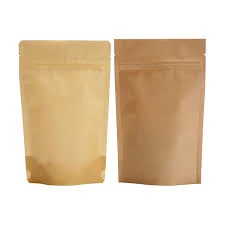- Afrikaans
- Albanian
- Amharic
- Arabic
- Armenian
- Azerbaijani
- Basque
- Belarusian
- Bengali
- Bosnian
- Bulgarian
- Catalan
- Cebuano
- chinese_simplified
- chinese_traditional
- Corsican
- Croatian
- Czech
- Danish
- Dutch
- English
- Esperanto
- Estonian
- Finnish
- French
- Frisian
- Galician
- Georgian
- German
- Greek
- Gujarati
- haitian_creole
- hausa
- hawaiian
- Hebrew
- Hindi
- Miao
- Hungarian
- Icelandic
- igbo
- Indonesian
- irish
- Italian
- Japanese
- Javanese
- Kannada
- kazakh
- Khmer
- Rwandese
- Korean
- Kurdish
- Kyrgyz
- Lao
- Latin
- Latvian
- Lithuanian
- Luxembourgish
- Macedonian
- Malgashi
- Malay
- Malayalam
- Maltese
- Maori
- Marathi
- Mongolian
- Myanmar
- Nepali
- Norwegian
- Norwegian
- Occitan
- Pashto
- Persian
- Polish
- Portuguese
- Punjabi
- Romanian
- Russian
- Samoan
- scottish-gaelic
- Serbian
- Sesotho
- Shona
- Sindhi
- Sinhala
- Slovak
- Slovenian
- Somali
- Spanish
- Sundanese
- Swahili
- Swedish
- Tagalog
- Tajik
- Tamil
- Tatar
- Telugu
- Thai
- Turkish
- Turkmen
- Ukrainian
- Urdu
- Uighur
- Uzbek
- Vietnamese
- Welsh
- Bantu
- Yiddish
- Yoruba
- Zulu
pastry packaging
The Evolution of Pastry Packaging A Blend of Functionality and Aesthetics
Pastry packaging has undergone a significant transformation over the years. The rise of the culinary arts, the booming bakery industry, and an increasing awareness of sustainability have all contributed to the evolution of how pastries are packaged. Packaging is no longer merely a means to protect the product; it's now an essential aspect of branding, marketing, and enhancing the customer experience.
Historical Perspective
Traditionally, pastry packaging was simple and utilitarian. Bakers often used paper bags, waxed paper, or cardboard boxes to deliver their goods. These methods provided basic protection against environmental factors, such as moisture and air. However, the focus remained primarily on functionality rather than aesthetics. As baked goods became increasingly popular, especially in the mid-20th century, the demand for more attractive packaging began to emerge.
The Rise of Branding
As the bakery industry expanded, competition intensified. Bakeries sought not only to sell delicious pastries but also to create a strong brand identity. This is where innovative packaging came into play. Colorful boxes adorned with logos and designs began to proliferate, attracting customers' attention. The packaging became an extension of the bakery’s brand, embodying its unique style and philosophy. Eye-catching designs not only helped to differentiate one bakery from another but also created a sense of expectation and excitement around the product.
The Role of Convenience
In recent years, convenience has taken center stage in pastry packaging. Consumers are increasingly looking for products that can fit into their busy lifestyles. This shift has led to the creation of packaging solutions that are not only easy to carry but also facilitate on-the-go consumption. For instance, single-serving packages and resealable bags have gained popularity, allowing customers to enjoy pastries wherever they are without sacrificing freshness.
Additionally, the rise of e-commerce has prompted bakeries to rethink their packaging strategies. Shipping pastries require protective materials that ensure the goods arrive in pristine condition. This has led to the use of custom-designed boxes, eco-friendly fillers, and moisture-proof wraps. Such innovations are essential in maintaining product integrity during transport while also reflecting the brand's commitment to quality.
pastry packaging

Sustainability in Pastry Packaging
With the increasing concern for environmental issues, sustainability has become a critical factor in pastry packaging. Consumers are more conscious than ever about the impact of their purchasing decisions. As a result, many bakeries are transitioning to eco-friendly packaging materials. Biodegradable, compostable, and recyclable options are now widely available, catering to the growing demand for environmentally responsible choices.
Additionally, some bakeries are opting for minimalistic packaging designs that reduce waste. These designs often feature natural materials, such as kraft paper, which not only look appealing but also appeal to eco-conscious consumers. By prioritizing sustainability in their packaging, bakeries can attract a loyal customer base that values both quality and environmental stewardship.
The Future of Pastry Packaging
As we move into the future, the possibilities for pastry packaging are seemingly endless. Innovations in technology, such as smart packaging, offer exciting prospects. For example, packaging that includes QR codes could enhance consumer engagement by providing information about ingredients, sourcing, and even recipes. This not only adds value to the packaging but also fosters a deeper connection between the brand and the consumer.
Moreover, the incorporation of augmented reality (AR) into packaging could create unique marketing experiences. Consumers might scan the packaging with their devices to access interactive content, learn about the baking process, or view behind-the-scenes videos of the bakery. Such innovations could redefine how consumers engage with pastry products and strengthen brand loyalty.
Conclusion
Pastry packaging has come a long way from its humble beginnings. As the industry continues to evolve, the focus on aesthetics, convenience, sustainability, and innovation will undoubtedly shape future trends. For bakeries, effective packaging is not just about protecting pastries but also about telling a story and connecting with consumers on a deeper level. As we embrace new technologies and ideas, the journey of pastry packaging is poised to be as delightful as the treats it holds.













